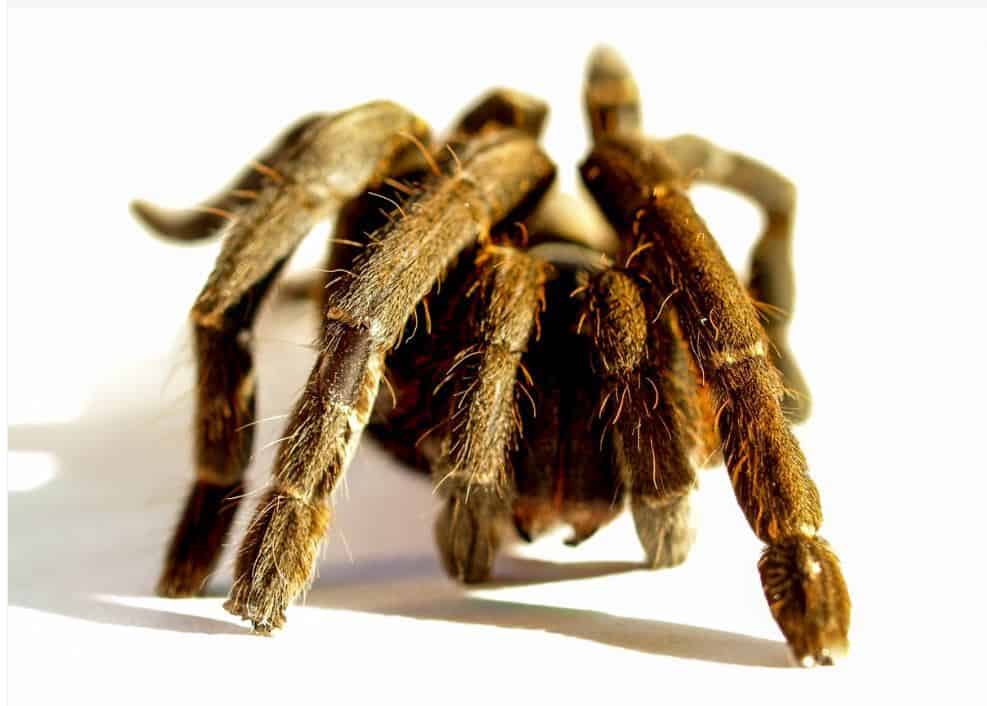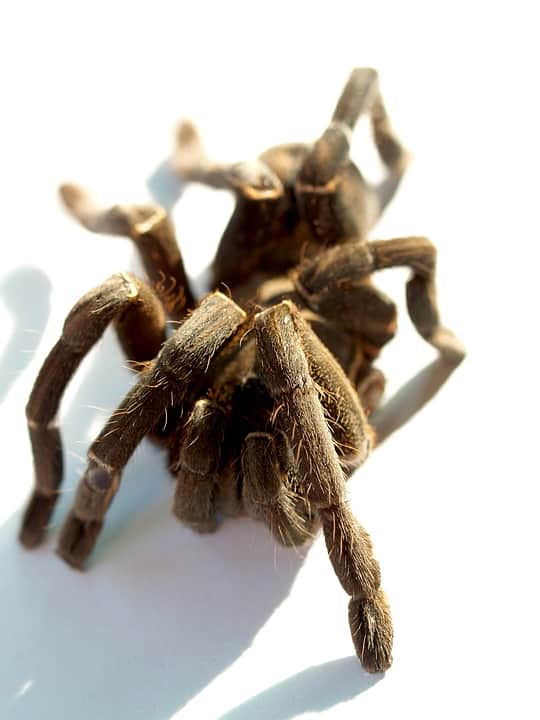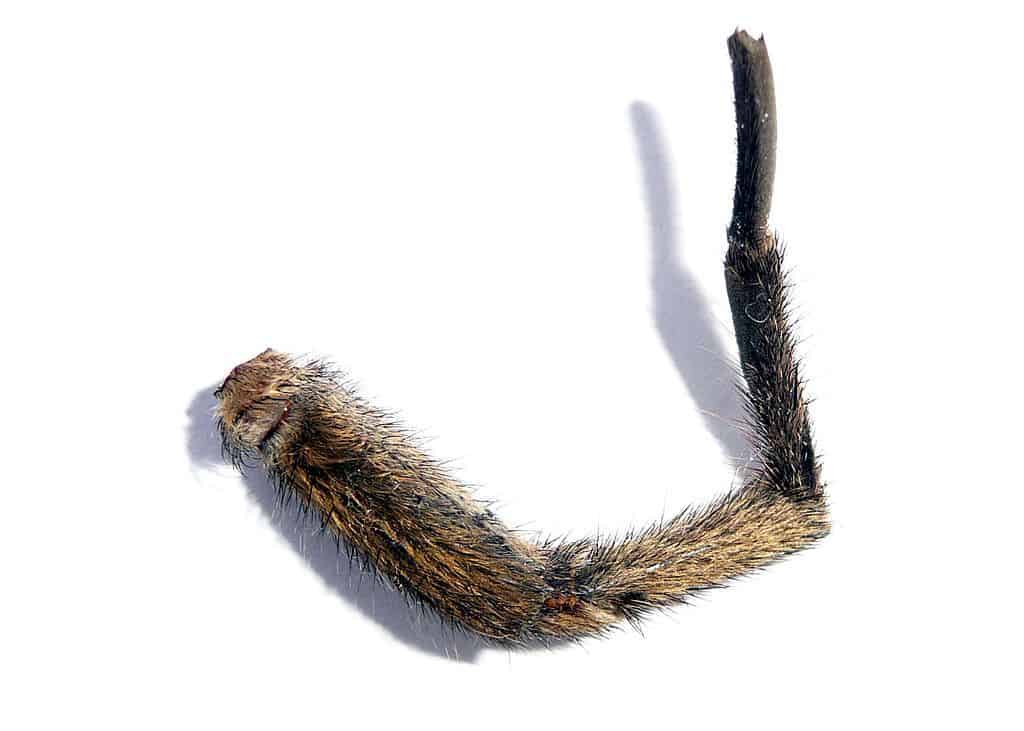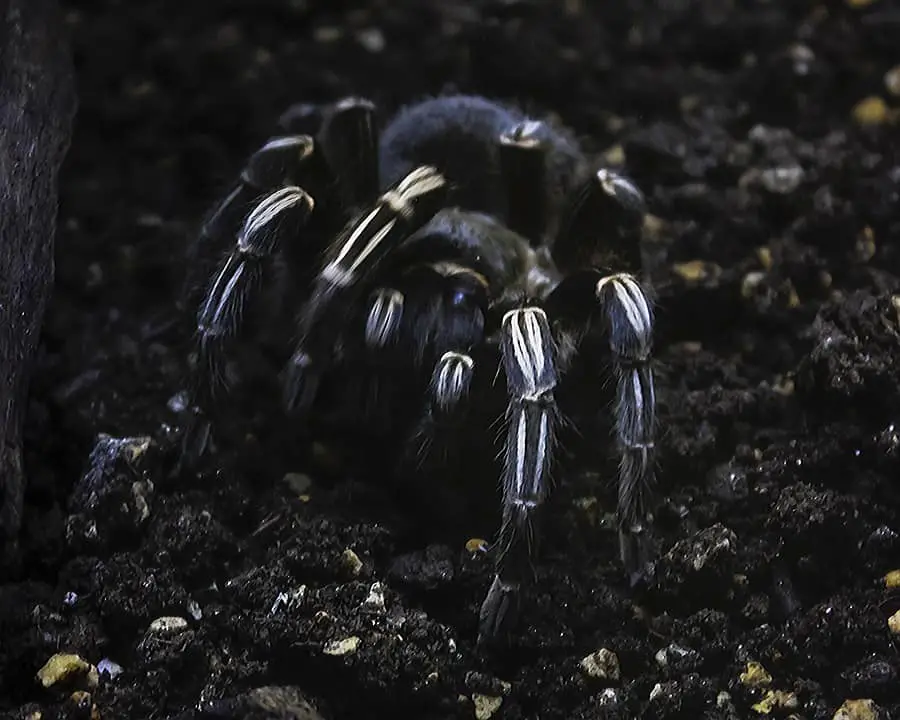Tarantulas are known as the biggest and bulkiest spiders on Earth. Initially feared and misunderstood, our paradigm about them has changed over the years.
After a lot of research into their temperament, behavior, and defensive maneuvers, it is known that some of them can be pretty shy and docile.
Being the beautiful animals they are, they display many different colors, such as black, yellow, orange, and even blue, mixed with incredible patterns and varieties.
Because of their stunning appearance and interesting behavior, there are plenty of people fascinated with them. Hobbyists are known for keeping some species as exotic pets; however, there’s still a lot of ignorance surrounding them and how their bodies work.
In this article, we’ll try to shine some light over these dark places and go over 10 amazing facts about the tarantula’s legs; a most relevant and amazing part of their bodies.

10 Facts about Tarantula legs
1. Tarantulas Have Eight Legs
It might seem obvious, but there is a misconception about the matter. There’s a large group of people that believe spiders have ten legs instead of eight.
You’ll be surprised to know that, in a way, they’re not wrong. Tarantulas have eight legs that they use for walking. However, on both sides of their mouth, they also have a pair used for many utilitarian purposes. It helps them feed, mate, communicate and even perceive their environments.
These front pairs of legs are referred to as pedipalps.
2. Tarantulas can Move over Vertical Surfaces
You’ll be hard-pressed to find someone who doesn’t know spiders are great climbers. They can move vertically over smooth surfaces, and tarantulas aren’t an exception to the rule.
However, not everyone knows how they do it. At the end of each leg, tarantulas have two to three retractable claws.
They have fine bristles or scopula surrounding their claws, making them capable of climbing almost any surface.
3. Tarantulas use Liquid to Move their Legs

You read it right. Tarantulas don’t use muscles to extend their legs outward. They do, however, have muscles in their joints and cephalothorax that allows them to make flexing motions.
Rather than muscles, they use a liquid called hemolymph to move and extend their legs and around. Hydraulic pressure moves this liquid back and forth, creating a flexing and extending motion in their legs.
This phenomenon explains how they can stay still in a hunting position and burst out at the next moment to pounce over their prey.
4. Tarantulas Move Faster in a Hot Environment
As we mentioned above, tarantulas use a liquid called hemolymph to propel their movement. It’s been proved through research that warmer temperatures affect the hemolymph’s properties, so they move smoothly with their legs, increasing their overall speed.
5. Tarantulas can regrow Lost Limbs

Tarantulas molt many times as they grow into a more mature state. Some individuals can lose a couple of legs during the process.
Some other times it’s just the result of an encounter with a predator, and some even drop them under stress.
In any case, they’re capable of growing back their lost limbs through molting. It’ll be a shorter version of the original leg at first, but it will eventually be the same length as the others as they continue growing.
6. Tarantulas use Their Legs to Propel Hair
New World Tarantula species use their legs to flick fine hairs off their abdomen, known as urticating hair. They’re covered with small pointy hairs that can be thrown at their enemies when they feel threatened; these can produce a severe rash reaction in the skin and eyes.
It’s pretty common to see bald spots on their abdomen. It means they have used their urticating hair to defend themselves quite recently, and they will grow back with time.
Interestingly enough, Old World species do not have these urticating hairs.
7. Male Tarantulas are Love Drummers
Some of the most frequently asked questions about spiders spin around the weird tapping sounds they make with their legs while into their tank glass.
Beginner keepers will often think it means they’re uncomfortable with their enclosure; however, it’s exactly the opposite. It’s a male habit to tap with his legs over hard surfaces as they look for females to mate.
8. Tarantulas Have Weird Dancing Rituals

For tarantulas, mating may be dangerous if you’re a male and exciting for females. Sometimes females will sink their fangs into the male to feed on them right after mating.
However, this doesn’t discourages males from trying to mate once they’re mature enough to do so. Once a male finds a female’s burrow, he starts tapping the ground with his legs to announce his presence.
Once the female accepts to mate, the male puts his legs in a special posture and lets the female start to attack him.
Then he uses his front legs to prevent her from biting as he uses his pedipalps to place his reproductive material into the female genital sockets.
It’s a complicated and dangerous dance, but the male will often run away right after with his life if done carefully and correctly. The females tend to stay in a trance-like state for a while after this happens, which is sometimes enough for the male to get away, but not always.
9. Tarantulas Eat Their Limbs for a Protein Boost
After a tarantula loses its leg, it’s pretty common for them to use it as food. Most members of the species tend to have a voracious appetite, especially females since they grow to be larger. Therefore, protein consumption is a must, no matter the source.
10. Tarantula Legs Come in Many Forms
Nobody knows better how to use the perfect tool for the job than the tarantulas do. Most species have their legs evolve to help them survive aggressions from the environment.
For instance, terrestrial species have short and fat legs that work best for hiding and digging burrows, with longer front legs to help them catch their prey.
Arboreal species, on the other hand, will have longer legs for climbing trees. Often, their back legs will be sturdier and stronger to allow them to jump long distances and surprise their prey.
It’s not hard to identify what kind of tarantula you’re looking at if you know where to look; their bodies are adapted to their habits, and their legs are no exception.
Final words
Tarantulas have many amazing qualities that make them so appealing. Every day, more and more tarantulas enter our homes as the beautiful and exotic pets we choose them for.
Their amazing legs are part of their attractiveness since their fast and elegant movements will captivate any hobbyist.
However, now we know that’s not all they use it for since legs are also used for communication, perception, mating, and even food.
- How Long Do American Eskimo Dogs Live? Important Factors and Care Tips - September 29, 2023
- Do American Bulldogs Need Grooming? Essential Tips and Care Guidelines - September 29, 2023
- Do Bengal Cats Enjoy Playing? Essential Tips for Keeping Them Active - September 29, 2023